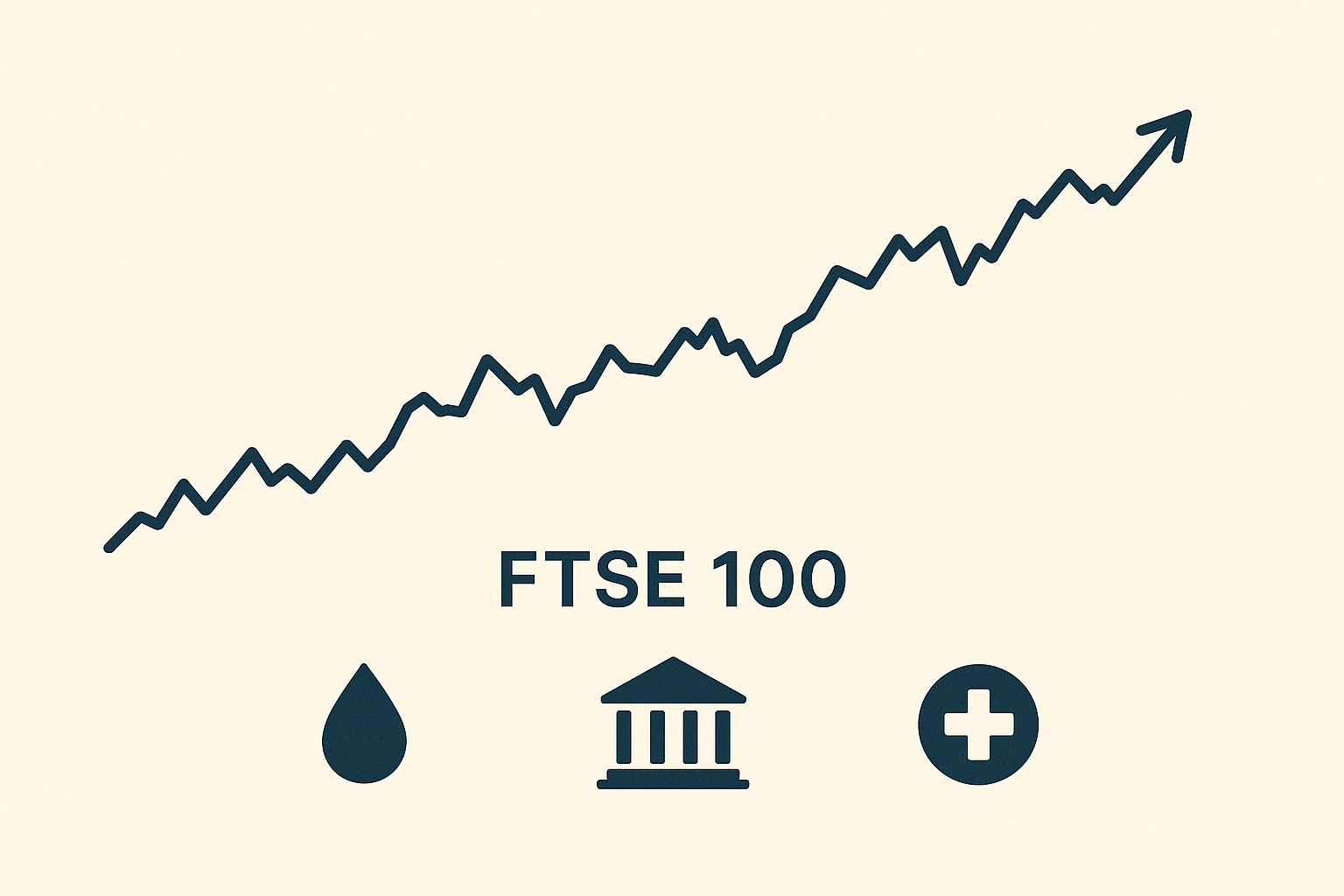Over the past year, the FTSE 100 has drawn considerable attention from investors, analysts, and market observers seeking signals amid the volatility that has rippled through global equities. Known as the crown jewel of UK indices, the FTSE 100 is home to the top 100 companies by market capitalization listed on the London Stock Exchange. Yet, its performance is not merely a reflection of domestic economic sentiment—it’s a complex interplay of international exposure, sectoral dominance, and investor psychology. In 2024, the FTSE 100 delivered modest but stable returns, outshining many peers in resilience while remaining under the shadow of global uncertainties ranging from inflation spikes to geopolitical tensions.
For UK investors, the FTSE 100 often serves as a barometer of economic confidence. Its heavy concentration in sectors like energy, mining, and financials gives it a unique profile—one that’s less tech-heavy than American indices like the S&P 500. This composition can be both a buffer and a burden, depending on global macroeconomic forces. The current cycle has proven this point with sharp clarity: while US tech stocks boomed, the FTSE 100’s conservative makeup offered shelter from speculative downturns but limited upside. As we move through 2025, questions around interest rates, inflation, and corporate earnings will continue to dictate the rhythm of its performance, with investors keenly watching for a shift in momentum.
The FTSE 100’s recent performance: a story of cautious optimism

The FTSE 100’s performance over the past 12 months has been quietly compelling. After a muted start in early 2024, the index gradually gained ground, posting a year-to-date gain of just over 5% by Q1 2025. This may seem underwhelming in comparison to more growth-oriented indices, but for an index marked by mature, dividend-paying firms, such steadiness is noteworthy. Contributing to this modest climb were improved energy prices, which boosted major players like Shell and BP, as well as the resurgence in banking profitability driven by higher interest margins. Additionally, the pound’s relative weakness against the dollar further supported earnings for UK companies with significant international operations.
However, this stable trajectory hasn’t been without turbulence. Investor sentiment has been continually tested by persistent inflation in the UK, ongoing political friction around Brexit aftershocks, and growing concerns over the global economic slowdown. Despite these hurdles, the FTSE 100’s resilience stands in contrast to more volatile indices. Defensive stocks in healthcare and consumer staples have acted as stabilizers, while energy and commodities added cyclical momentum. Still, there remains an evident gap between the FTSE 100’s potential and its actual performance—largely due to the cautious stance many investors have taken amidst global headwinds. The index, while moving forward, does so with calculated steps rather than leaps of confidence.
Market forces and macro trends shaping the outlook
Several macroeconomic factors are currently shaping investor expectations for the FTSE 100 and broader UK equities. First and foremost is the direction of UK monetary policy. With inflation showing signs of easing but still sitting above the Bank of England’s 2% target, interest rate cuts remain speculative. Markets are pricing in a potential shift in policy by late 2025, which could act as a catalyst for equities—especially domestically-focused sectors. The banking sector, in particular, walks a tightrope: while high rates have inflated margins, rate cuts could shift focus back to loan growth and credit health, impacting stock valuations differently.
Another crucial variable is the global demand for commodities. Given the FTSE 100’s strong representation of energy and mining giants, demand from emerging economies and industrial production trends in China play pivotal roles. The Chinese recovery, though slower than expected, could still offer upside to metals and energy prices, indirectly fueling earnings growth for the UK’s heavyweight exporters. Meanwhile, investor appetite for dividend stocks continues to support demand for FTSE constituents known for strong yield histories, especially in times of global uncertainty. This “dividend anchor” offers a psychological buffer in times of volatility and is expected to be a stabilizing factor throughout 2025.
At the geopolitical level, risks persist but have become somewhat priced in. While the Russia-Ukraine war and Middle East tensions continue to inject risk into markets, investors have grown somewhat desensitized, adjusting portfolios around sectors and companies best positioned to weather external shocks. The FTSE 100’s global nature means it may continue to benefit from being perceived as a hedge against local disruptions—though such benefits are limited and must be weighed against domestic risks like political instability and regulatory unpredictability in the post-Brexit environment.
Where the opportunities lie: sectors, strategies, and sentiment
For investors looking ahead, identifying pockets of opportunity within the FTSE 100 will require nuance. Sectors tied to global infrastructure, such as construction materials and industrial equipment, could see long-term tailwinds from infrastructure programs in both the US and EU. Likewise, energy transition plays—especially large-cap utilities investing in renewables—are positioned to attract ESG-conscious capital. Financial services also present mixed but compelling possibilities. While rate cut expectations could pressure margins, increased consumer lending and digital transformation strategies may open growth channels for banks and insurers willing to adapt.
Healthcare and consumer staples remain key defensive plays. These sectors have historically provided a cushion during periods of volatility, and their steady earnings and dividend yields continue to appeal to risk-averse investors. Pharmaceutical giants like AstraZeneca and GlaxoSmithKline also offer innovation pipelines that promise long-term value, especially as healthcare remains a global priority post-pandemic. On the retail front, companies with strong e-commerce infrastructure and international footprints may outperform those focused solely on UK consumers, especially if the domestic economy enters a slowdown.
From a strategic standpoint, many investors are adopting a barbell approach—balancing defensive holdings with selective exposure to cyclicals. Passive investing via FTSE 100 ETFs remains a popular strategy, especially among long-term investors seeking exposure to large-cap UK stocks without actively picking winners. However, there’s also growing interest in active strategies targeting value stocks or dividend aristocrats within the index. Ultimately, sentiment remains cautiously optimistic: investors are willing to take on equity exposure, but only in areas with clear value, strong fundamentals, or consistent cash flow.


